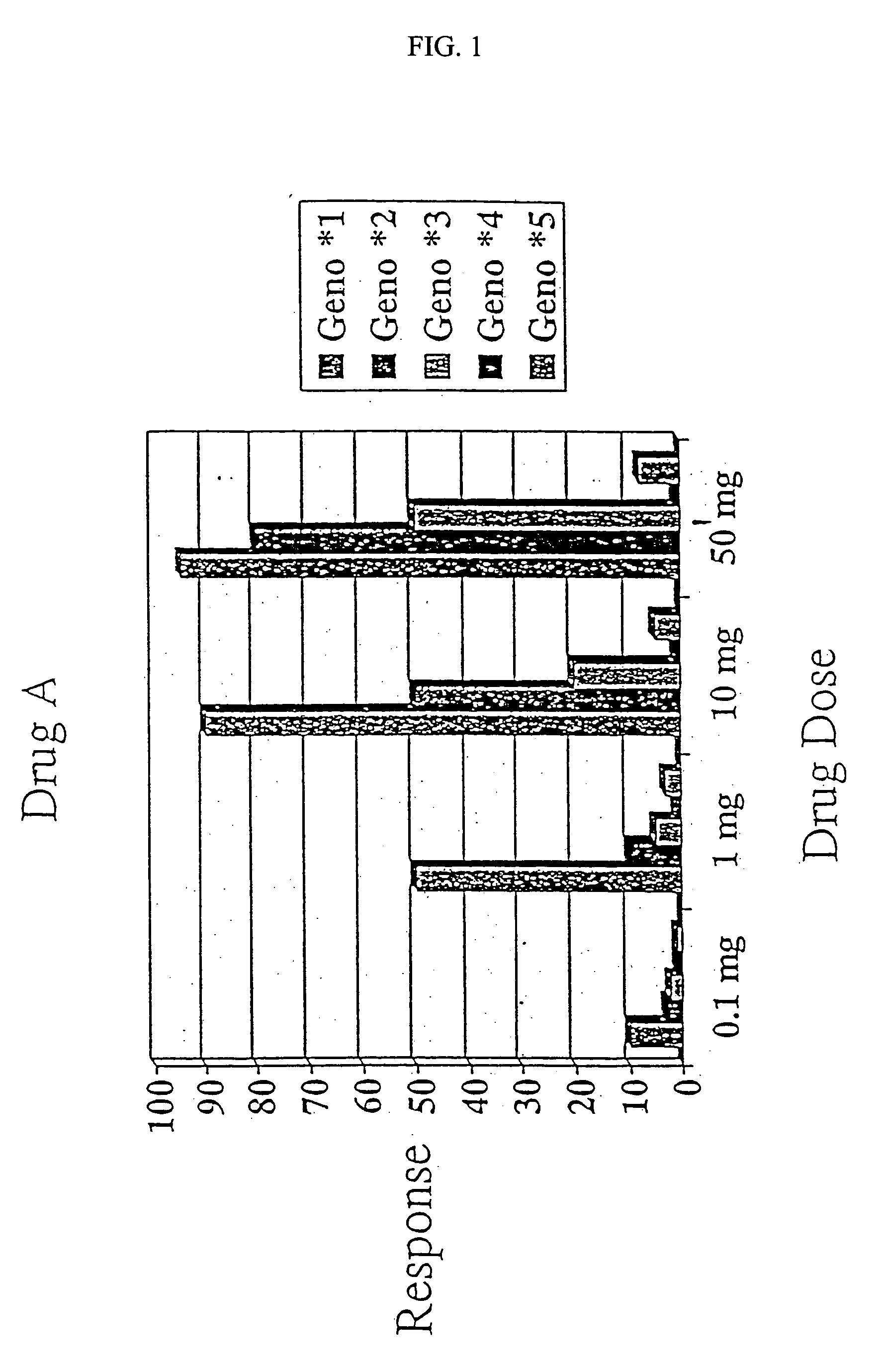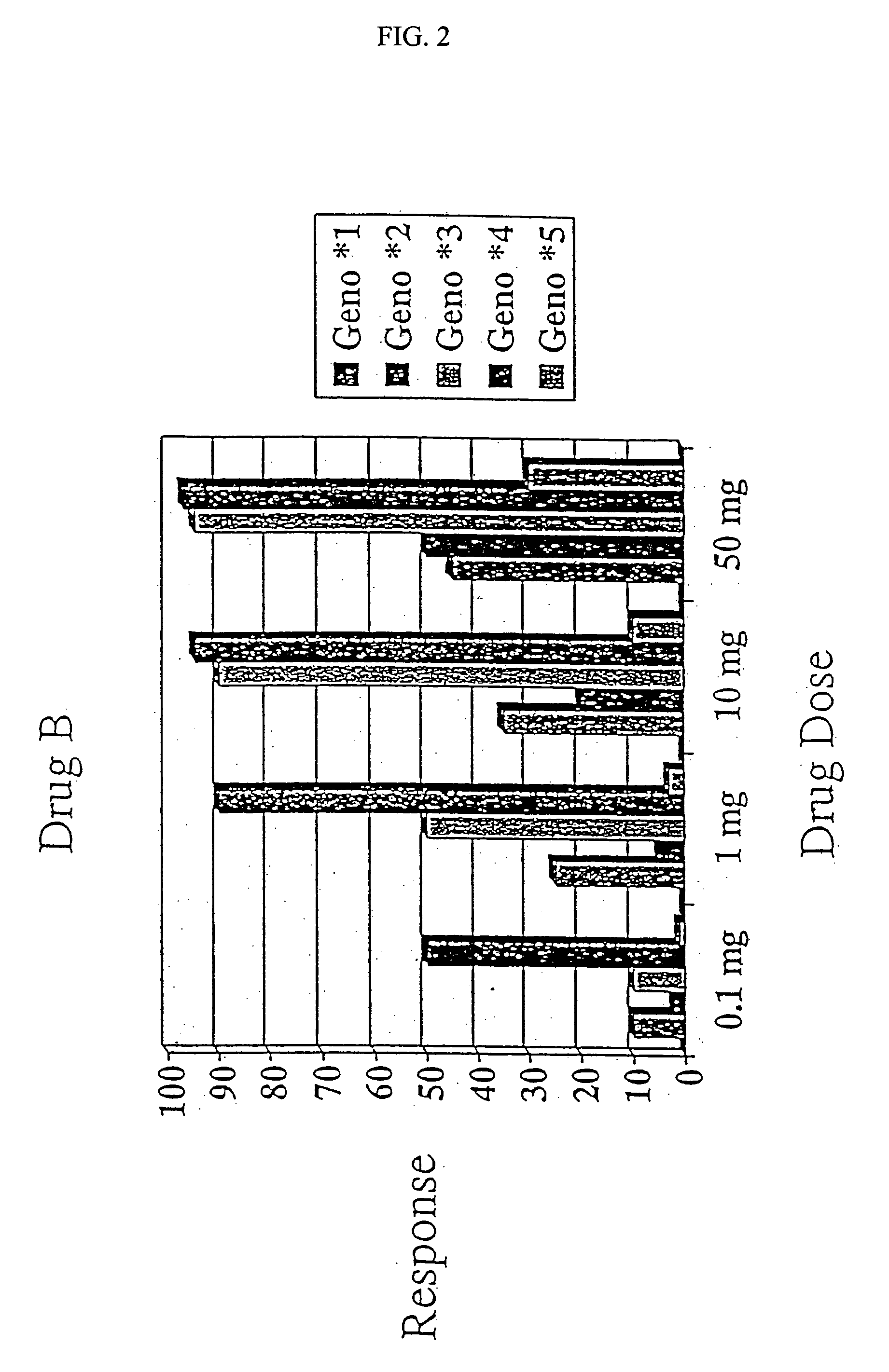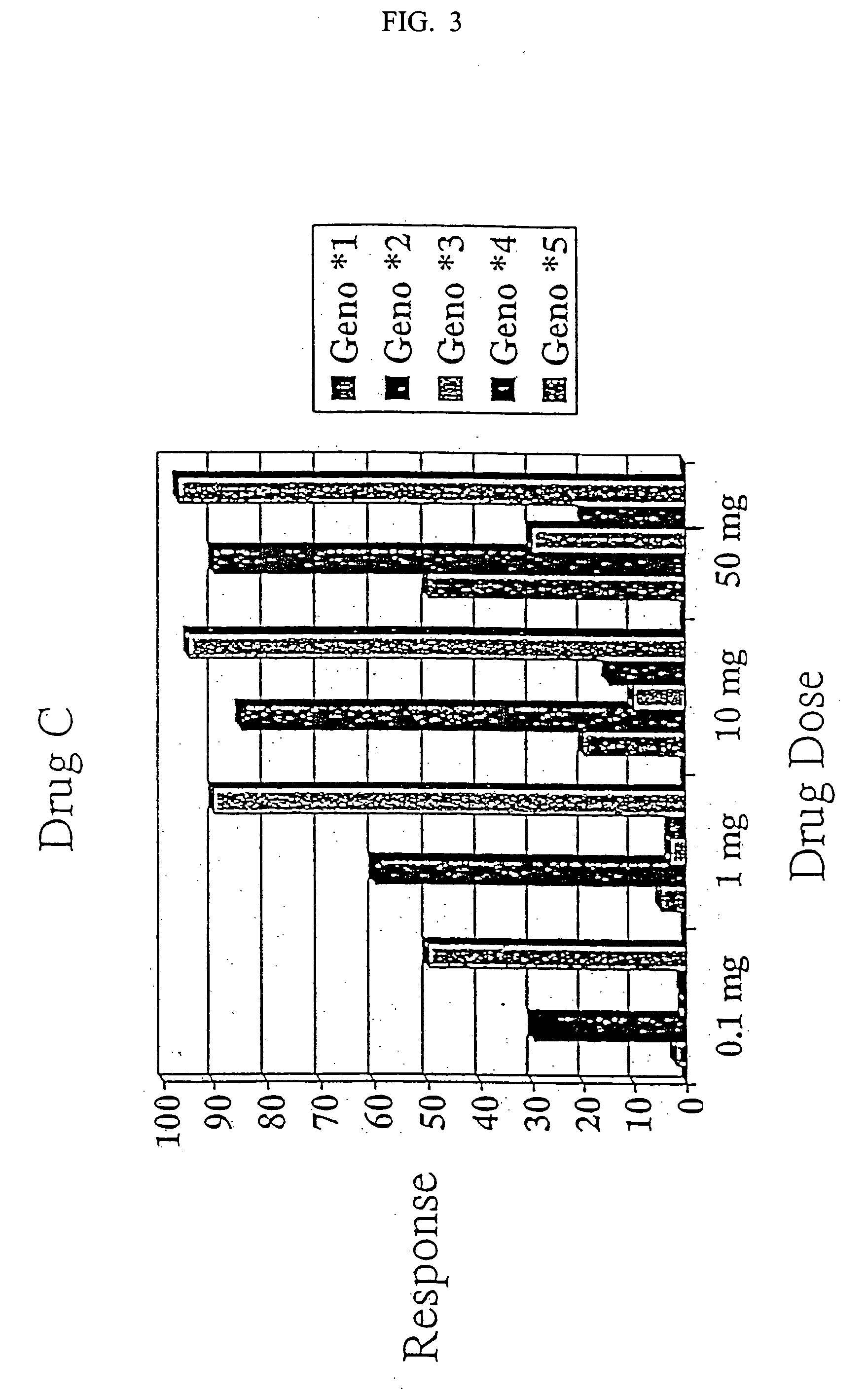Methods of identifying optimal drug combinations and compositions thereof
a drug combination and composition technology, applied in the field of compositions for effective treatment, can solve the problems of increasing the toxic effect experienced by the individual, affecting the effectiveness of the treatment, and affecting the effect of the treatmen
- Summary
- Abstract
- Description
- Claims
- Application Information
AI Technical Summary
Benefits of technology
Problems solved by technology
Method used
Image
Examples
example i
[0109] Five Drugs with Additive Efficacies for Five Equally Populated Genotypes
[0110] A variety of drugs known to treat a pathology can be selected for analysis in order to determine a suitable combination of drugs for treating the pathology. For example, drugs A, B, C, D and E which are all used to treat a particular pathology can be subjected to the following analysis. Each of the five drugs has a characteristic dose-response curve that is different for each of five different equally populated genotypes: *1, *2, *3, *4 and *5. Dose-response curves are shown for drugs A, B, C, D and E in FIGS. 1, 2, 3, 4 and 5, respectively. Assuming each drug acts on a population or subpopulation in a manner that is independent from each of the other drugs, the efficacies of multiple drugs are additive. For example, if drugs A and B act independently of each other with respect to the subpopulation of patients in genotype *1, then the 10% of patients in genotype *1 effectively treated by 0.1 mg of ...
example ii
[0116] Two Drugs with Additive Efficacies for Two Variably Populated Genotypes
[0117] In another example, knowledge of the efficacy of each drug can be used to prepare a drug combination even in the absence of knowledge of the exact distribution of different genotypes in the total patient population. In this example, two drugs, A and B have different efficacies for two different SNP variant groups, V1 and V2, of the total patient population. Once again, these drugs will be considered to be independent of one another, and therefore, the efficacies of the two drugs for either SNP variant are additive. FIGS. 6 and 7 show the dose-response relationships and toxicity thresholds for drugs A and B, respectively. Both drugs have a threshold toxicity of 30 mg, and for this example, the threshold toxicities are additive. For example, 20 mg of drug A in combination with 20 mg of drug B has the same toxicity as 40 mg of drug A or drug B. Thus, the maximum sum of drugs A and B that can be used in...
PUM
| Property | Measurement | Unit |
|---|---|---|
| time | aaaaa | aaaaa |
| time | aaaaa | aaaaa |
| threshold toxicity | aaaaa | aaaaa |
Abstract
Description
Claims
Application Information
 Login to View More
Login to View More - R&D
- Intellectual Property
- Life Sciences
- Materials
- Tech Scout
- Unparalleled Data Quality
- Higher Quality Content
- 60% Fewer Hallucinations
Browse by: Latest US Patents, China's latest patents, Technical Efficacy Thesaurus, Application Domain, Technology Topic, Popular Technical Reports.
© 2025 PatSnap. All rights reserved.Legal|Privacy policy|Modern Slavery Act Transparency Statement|Sitemap|About US| Contact US: help@patsnap.com



